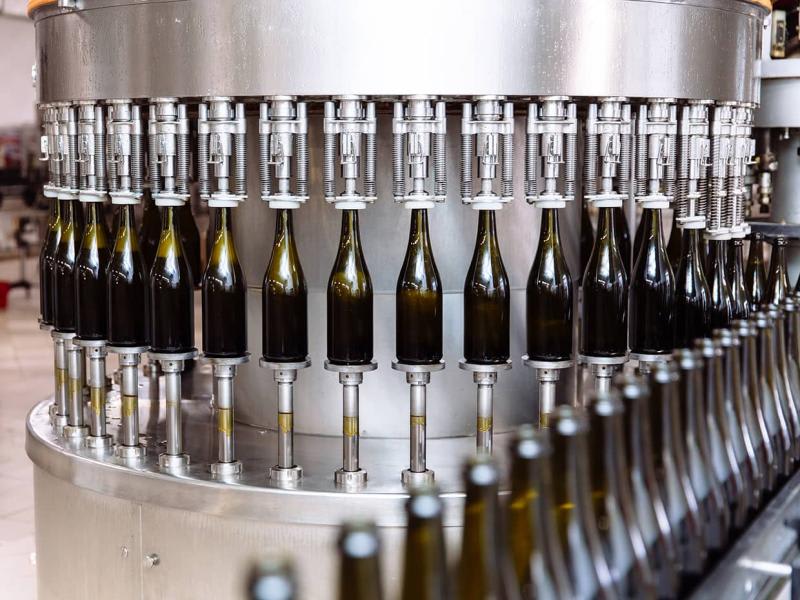“We’re all in the same boat” is a phrase which has echoed amongst global citizens in the last few months, as we all try to navigate our way through this unprecedented global pandemic, not seen since the likes of the Spanish flu 100 years ago.
In these now very different times of globalisation and mass world travel, the business world is contemplating the consequences of COVID-19 on the global and indeed our domestic economies. Cash is king in times of sudden economic downturn, and outside of immediate government financial assistance offered to business in response to the effects of COVID-19, tax incentives and reliefs are another key lever to pull when looking to improve cash flow.
Many countries around the world offer generous and often refundable Research & Development (“R&D”) tax credits where a business is undertaking eligible R&D activities as prescribed in the relevant tax law of that country (the R&D laws are built on similar concepts so for global companies an international approach is a clear advantage in establishing where and how R&D activities should take place, and what claims should be made).
In many cases, an R&D claimant “self-assesses” their eligibility against the relevant criteria and lodges an R&D claim with the relevant authorities in order to access the benefits available, so accurate and prompt submissions are essential to optimise but not overstate the claim that is made.
Notably, some countries’ R&D regimes offer incentives even where the Intellectual Property resulting from local R&D activities resides with a foreign related company outside of the relevant country, which in some cases offers the ability to access tax incentives across borders.
In this article, we speak to our R&D Tax specialists in the UK, the USA and Australia in relation to how their tax incentive program is operating during the current COVID-19 pandemic and what changes they are seeing, and what opportunities this provides.
Firstly though, across the globe, we wanted to share:
- The effects of COVID-19 on global R&D operations; and
- Some examples of innovations we are seeing as a result.
Effects of COVID-19 on global R&D operations
- Manufacturing processes have changed in order to maintain or improve output with a reduced or staggered headcount due to COVID-19 related job cuts;
- Technology is now being utilised to interact with customers differently (i.e. developing apps for custom orders, automating shipping and delivery to avoid physical contact, healthcare providers transitioning to telemedicine, financial institutions offering e-banking services);
- Companies are investing in technology and solutions in order to build out remote work and virtual collaboration capabilities to the many people who now find themselves working from home. This might be rolling out something for the first time or to increase the load/scale to the new/increased number of users. Given this, there is often significant development work to ensure security and integrate tools;
- Diversification, which involves previously unforeseen R&D being undertaken, by those businesses that are trying something new or adapting existing systems and processes;
- Disruptions to supply chains have resulted in existing R&D claimants having difficulty in accessing services and components required to undertake their R&D activities due to COVID-19 restrictions, so R&D projects are now prolonged or delayed (which my in turn cause further R&D costs as they seek new solutions).
Examples of innovations during COVID-19
- Breweries, distilleries, cold pressed juice as well as big brand household product companies across the globe are diversifying and expanding their product range to include new products such as hand sanitiser which they did not manufacture previously;
- Multinational FMCG manufacturers have had to move even faster and change their production processes to increase capacity at very short notice. Some have been operating their production lines 24/7 to increase supplies of their existing, standard products particularly bleach, the ubiquitous toilet paper and other cleaning products such as dishwashing liquid. Bar and liquid soap products have also seen increased production;
- Many companies are using their advanced manufacturing equipment to diversify existing operations into PPE pieces, such as an Australian camera accessories manufacturer now producing face shields using injection moulding techniques;
- In the UK, a consortium of businesses including automotive companies are working together to manufacture respiratory equipment such as ventilators under the “VentilatorChallengeUK” banner;
- Working from home has seen the use of interactive communication technologies such as Zoom, MS Teams, Skype and House Party skyrocket, with these providers working harder than ever to ensure a seamless experience and enhanced functionality; and
- In Australia, the Federal Government have accelerated the launch of their Telehealth services, as well as building and launching the COVIDSafe contact tracing for all Australians to install on their phones.
Eric Perez, Partner & Danielle Kaufman, Senior Manager, from RSM US report the following:
- Many State and Local credits are available to taxpayers for the same expenditures, specific to the location in which costs were incurred. In some States these are refundable or able to be sold back to the State or another taxpayer at a reduced rate in order to generate cash now.
- Companies should review their technology spend incurred in connection with recent activities to ensure they are receiving the appropriate sales tax exemptions.
- For start-up companies that have previously utilized the R&D credit against income tax but will not be eligible to do so because of a tax loss, they should review eligibility to offset payroll taxes.
- With many US tax deadlines extended due to COVID-19, there is opportunity to pursue current year credits for taxpayers who previously did not have time to undertake a deeper analysis due to timing limitations.
- Similarly, by identifying opportunities arising from diversification and business model changes caused by COVID-19, companies who have not claimed in the past may now recognize areas in which they would have been eligible in prior years but did not claim credits. There are often efficiencies by completing multiple years at once.
- Taxpayers who are waiting on refunds from previously filed amended returns (especially paper filed) may see longer processing times to receive refunds.
- Overall, recent COVID-19 legislation does not specifically impact the US Federal R&D tax credit system. However, taxpayers have increased interest in items that allow for cash preservation or retention.
Jessica Olivier, Partner, from RSM Australia reports as follows:
- Given the uncertain times and business’ current focus on surviving this crisis, the administering authority, AusIndustry is providing an extension to lodge an R&D claim for the last financial year ended 30 June 2019 – companies now have until 30 September 2020 to make a claim.
- Conversely, companies need to access cashflow more than ever, so are keen to unlock R&D tax credits more quickly. Given this, we are assisting companies to prepare their R&D earlier for the current 30 June 2020 financial year-end, so that R&D claims can be lodged immediately post 30 June 2020 and the R&D refunds processed and received more quickly than in prior years.
- In some cases, we are working with clients and third-party R&D financiers who will provide a cash advance on a claimant’s current year R&D expenditure to date, prior to being able to formally lodge a claim and access the tax credit at financial year end.
- Newly announced increased/accelerated depreciation measures forplant and equipment expenditure used in R&D activities, may in some cases provide an enhanced benefit once combined with the R&D tax incentive.
- In addition, there have been questions in relation to COVID-19 related wage subsidies and whether this might also form part of the eligible R&D salary expenditure. Similarly, claimants will need to consider the effect of other government grants and subsidies offered during COVID-19 on their R&D claims.
- Clients are querying whether the COVID-19 is affecting the Australian Tax Office (ATO)’s authority’s ability to process R&D claims in a timely way and hence delay any R&D refund due. So far, we are not seeing any delays in the ATO’s processing times.
James Tetley, Partner, RSM UK, reports that his conversations with clients are focused on:
- Bringing forward the current R&D claim process where possible, in order to submit the claim earlier than planned and receive the cash support quicker.
- Starting the process now - HMRC aim to process 95 per cent of claims within 28 days, so the sooner a claim is completed and submitted , the sooner the cash will be received from HMRC.
- Checking whether past claim periods have been maximised - and also whether the 2018/19 and 2019/20 periods could be claimed together now, to take advantage of the two-year deadline.
- For those companies that have never made a claim it’s worth revisiting prior years to check whether there is any qualifying expenditure.
- Companies that are currently reviewing emergency funding options from the Government need to understand where any grants or rebates you receive might affect your ability to make an R&D claim.
- Reviewing capital spending on R&D - R&D allowances can provide a 100 per cent first year deduction which is a cash flow saving on the usual capital allowances that are available.
RSM UK are in regular dialogue with the UK tax authorities’ R&D Technical Unit regarding operation of R&D tax credits during the COVID-19 pandemic, and advise:
- HMRC processing - claims are continuing to be processed in approximately 28 days, with all processing units set up to work remotely. Existing filing deadlines and submission requirements also continue to operate as normal.
- HMRC Time To Pay Arrangements (TTP) & VAT Deferral - Entering into an agreement with HMRC to defer taxes (either VAT, or other) will not impact on the ability to generate a repayable R&D claim amounts through the ‘set off’ legislation – on the basis that a deferral stops the amount of tax being ‘owed’, and HMRC processing teams have been advised not to seek to offset any repayable R&D amount against other taxes deferred. This is in contrast to a TTP arrangement, where the tax remains owing albeit agreement has been reached with HMRC to settle the amount over a longer period of time.
Conclusion
As the global community slowly begins to find its way through this international pandemic, we are planning for a “brave new world” of business once this pandemic is over, and reactionary behaviour turns to more positive steps towards economic recovery and creative thinking about the next stage.
We note already that COVID-19 has forced companies to radically change their business models, processes, routes to market and even products and services. New ways of doing business will be more than a saying but a business necessity.
From an R&D perspective we expect to see more research, more experimentation and greater innovation. In turn, this will likely see a renewed awareness of government incentive programs and as such, businesses realising their ability to now claim R&D tax incentives. In response governments too will be looking to promote economic activity and investment, so changes in the R&D programs are likely as countries globally seek their share of new investment spending.
Indeed, once companies can reflect on these challenging times, it is likely some significant R&D will have taken place particularly on new initiatives driven by and undertaken during the initial period of COVID chaos. These may well give rise to R&D incentives so check now and follow up to make sure the opportunity is not lost.







